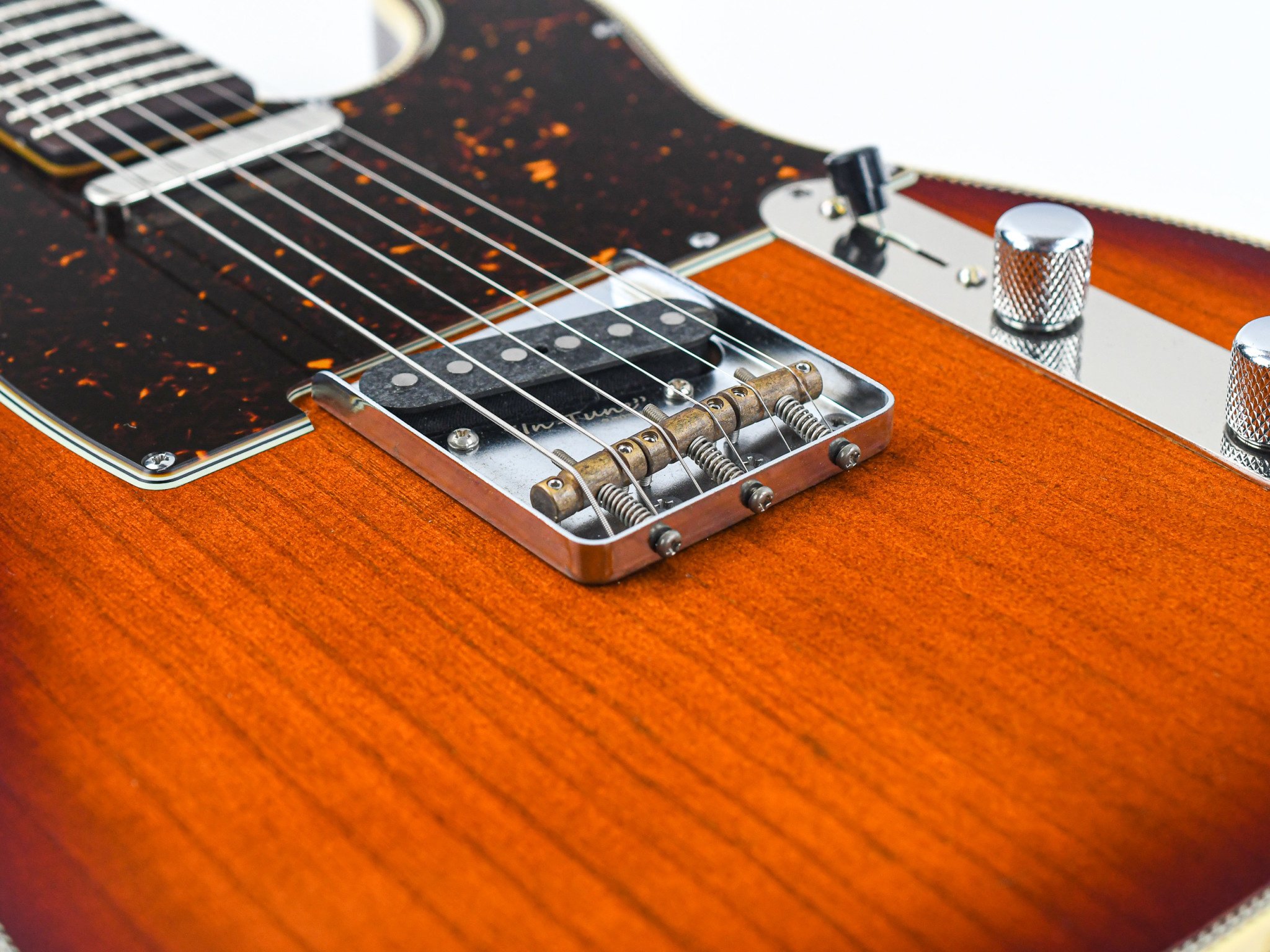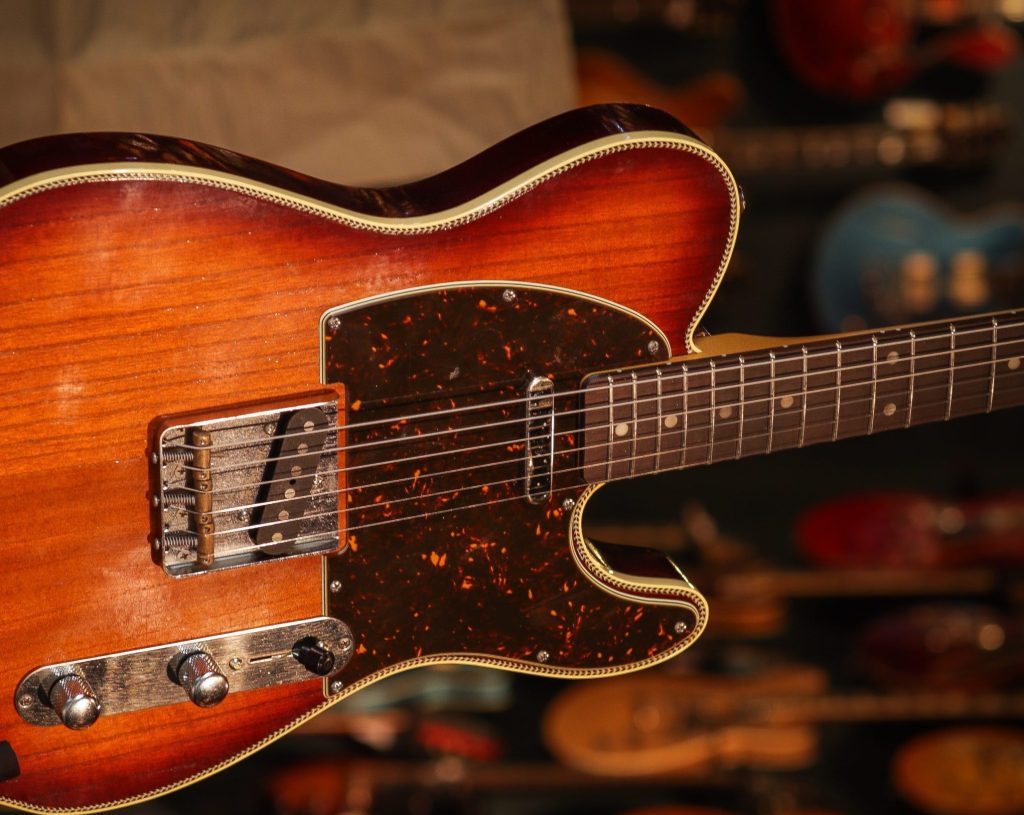How does it sound
The beauty of Paulownia!
THE BEAUTY OF PAULOWNIA!
Beautifully grained, super resonant and feather light: Paulownia has it all!
A telecaster guitar is almost synonymous with ash. Or to be a bit more precise: swamp ash. Why? Because Leo Fender used this tonewood when he made his first iconic electric guitars during the 50s of the last century. He started with spruce, but that was a bit too soft and too heavy. Swamp ash was lighter, sturdier, had some nice figuring, it was cheap and widely available at the time: perfect for someone who is planning to build a lot of guitars. And did we mention swamp ash sounds great? Clear as a bell with beautiful mids and wonderful sustain.
But currently swamp ash is struggling due to climate change. It grows mainly in the United States and as the name suggests it needs a somewhat moist and stable surrounding to grow. Due to flooding, it is now often either too wet or too dry and swamp ash suffers as a result. It becomes more expensive, while the quality decreases.
Viva Paulownia
Fortunately, there are very good alternatives, such as Paulownia. This tree has been popular in the East for centuries as a fast-growing park vegetation. Within ten years or so you get a full grown Paulownia tree that fans out with beautiful leaves. In China and Japan they use the wood for furniture and for traditional stringed instruments like the koto and pipa.
The wood is incredibly light, truly bizarre! We sometimes call it aluminum with a grain, because Paulownia has beautiful dramatic drawings, so you immediately see that it really is a solid plank. Thanks to its rapid growth Paulownia is a lot more durable and cheaper than Swamp Ash and it is now growing in Europe, for example in Romania and Portugal these park trees are sprouting out of the ground. In short: a perfect, local alternative for Swamp Ash. Fender also uses it in the Brad Paisley model.
Paulownia by Kauffmann
But the real King of Paulownia is without a doubt Kauffmann Guitars from the Netherlands. Founder and guitar builder Albert Deinum wanted to develop a new guitar about three years ago. A nice, somewhat quirky model, a bit larger than usual, offset body shape, bold looks and at the same time super-ergonomic. A guitar that feels like coming home. Like a warm wool sweater that hugs you when you put it on. Like something homely. Like something… Cozy…
Of course, such a guitar can’t be too heavy, so Albert had to find the right tonewood. Swamp ash was no option nor was alder. Way too heavy. Gibson cleverly uses the light korina for the somewhat larger Flying V models, but that tonewood has to travel a long way to the Netherlands. And then Albert stumbled on Mario Guitars in Nashville with guitars made of Paulownia. Might that be something?
After some experiments, it turned out to be a hit.
Albert: “Paulownia is very easy to work with, because it responds wonderfully predictable and when you build guitars, that is exactly what you want. The grain can be very wide, but I also like those wild patterns, because they looks great on our guitars. You just have to give that grain a bit of extra tender love and care before you finish a guitar, so that’s not a problem. Once that is taken care of, I have the super lightweight tonewood that is just perfect for my Cozy guitars.”
“And the sound? Well, maybe that was the biggest surprise. I was afraid it would sound a little bit tame, or maybe even boring, but it absolutely isn’t! The wood is dry, stable and very resonant so it gives a striking amount of volume. Even if you play a Paulownia guitar unamplified. Of course every piece of wood is different, but I often hear nice warm mids, clear lows and never ever any annoying highs. It doesn’t have the ice pickiness swamp ash sometimes has. It leans towards the mellow tone of alder, but not too much either. For me, it sits right between swamp ash and alder.”
Zitten er dan geen nadelen aan Paulownia? Jawel, het is zacht en dat maakt het gevoelig voor krassen en butsen. Dus als je op zoek bent naar een gitaar de er over vijf jaar nog als nieuw uitziet, dan is een Paulownia gitaar met een zachte nitro finish niet de eerste keuze. Zoek je een lichtgewicht gitaar waaraan je snel kunt zien hoe graag je erop speelt, dan is Paulownia perfect.

At Kauffmann they know how to relic a guitar to add that lovely played in look and feel to a guitar, so there is lots more Paulownia-guitargoodness on the menu. “We plan to build 440 guitars next year and 85 percent will be made with Paulownia. Not just Cozy’s, because all our models are now available in Paulownia.”
This article was written by The Fellowshop of Acoustics, we have worked with them for many years and the magical Guitar Villa in Dedemsvaart is Official Kauffmann Dealer in the North of the Netherlands.




We are trying to promote this wood in Holland see http://www.paulownianetwerk.nl
Paulownia? I have a Tokai made from it. Super guitar tone. Great wood. Does not destroy our planet. Way to go!